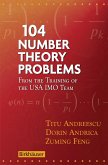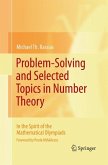This monograph elucidates and extends many theorems and conjectures in analytic number theory and algebraic asymptotic analysis via the natural notions of degree and logexponential degree. The Riemann hypothesis, for example, is equivalent to the statement that the degree of the function π(x) - li(x) is 1/2, where π(x) is the prime counting function and li(x) is the logarithmic integral function. Part 1 of the text is a survey of analytic number theory, Part 2 introduces the notion of logexponential degree and uses it to extend results in algebraic asymptotic analysis, and Part 3 applies the results of Part 2 to the various functions that figure most prominently in analytic number theory.Central to the notion of logexponential degree are G H Hardy's logarithmico-exponential functions, which are real functions defined in a neighborhood of ∞ that can be built from id, exp, and log using the operations +, -, /, and °. Such functions are natural benchmarks for the orders of growth of functions in analytic number theory. The main goal of Part 3 is to express the logexponential degree of various functions in analytic number theory in terms of as few 'logexponential primitives' as possible. The logexponential degree of the function eγπp
Hinweis: Dieser Artikel kann nur an eine deutsche Lieferadresse ausgeliefert werden.
Hinweis: Dieser Artikel kann nur an eine deutsche Lieferadresse ausgeliefert werden.








